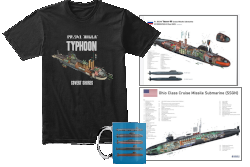5-most-influential-submarine-designs-ever
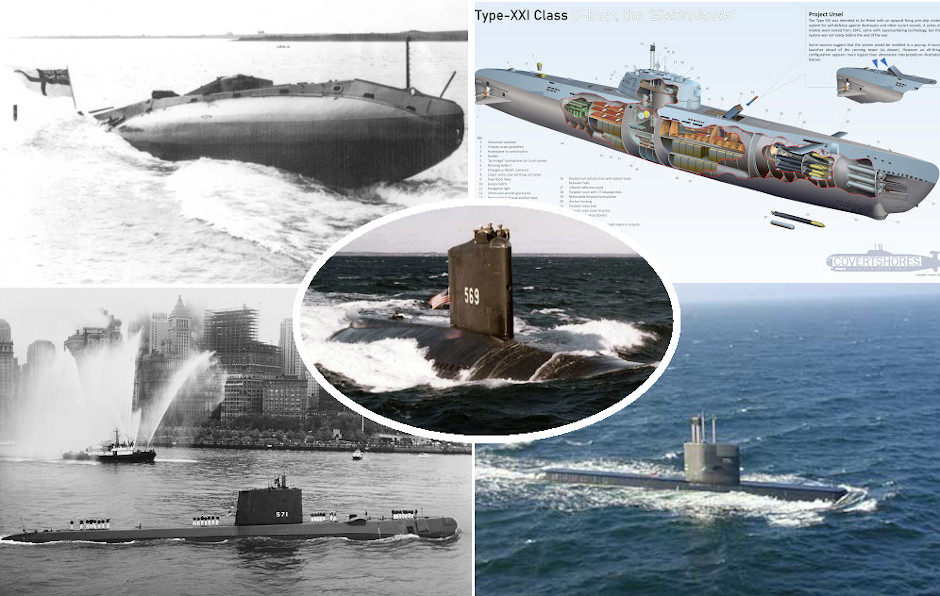
5 Most Influential Submarine Designs Ever
Submarine designs can be considered important for a lot of reasons. Some were particularly successful in combat. Others are particularly impressive in size, firepower or engineering terms. Think the French submarine Surcouf, Japanese I-400 or the gigantic TYPHOON. The list of criteria goes on. But only a few can be said to have really influenced the design of subsequent submarines.
These five can easily be argued to have been the most important in overall terms. Not just because they were good designs themselves, but because subsequent submarine designers perpetuated their best features.
These five submarines are Super-Influencers. I will lay them out in chronological order, starting with the oldest:
-
Holland Class ( United States, United Kingdom) – Overall design
-
Type-XXI u-boat, Germany - Overall design
-
USS Albacore, United States – Hull shape
-
USS Nautilus, United States – Nuclear propulsion
-
HMS Näcken, Sweden – Air-Independent Power (AIP)
1. Holland Class submarine, 1900
Modern histories of submarines often start with the Holland Class, and for good reason. Although there were a number of comparable designs which entered service around the same time, the Holland designs had a more widespread impact. Other national projects (e.g. France, Germany, Italy…) mostly only affected their own navy.
In the late 1800s Irish born submarine inventor John Philip Holland managed to build practical working submarines, arguably the first tenable design for regular naval use. Crucially they were adopted by the Royal Navy, then the most powerful navy in the world, and the US Navy.
They were built in both Britain and America, and formed the basis for these country’s subsequent submarine designs. And Holland derived designs were exported from here to other countries such as Russia, Sweden and Japan.
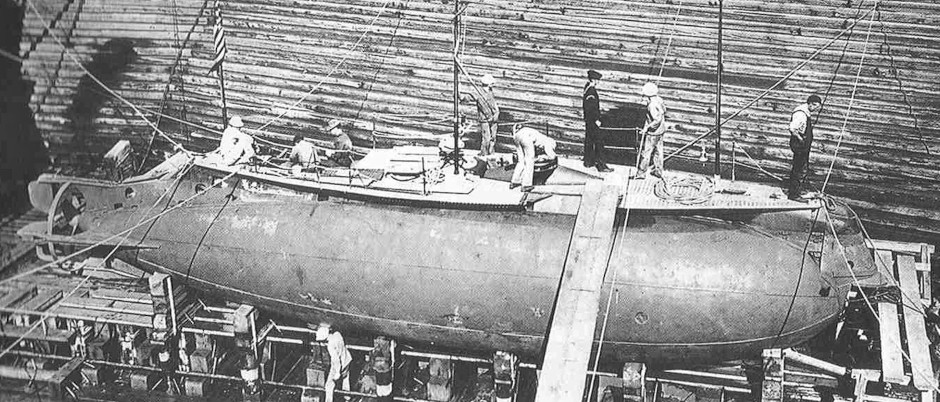
USS Holland (SS-1), c1901. The boat served with the US Navy until 1910 and strongly influenced subsequent submarines, particularly made by the Electric Boat Company. Photo via NAVSOURCE (http://www.navsource.org/archives/08/08001.htm - USN photo courtesy of Scott Koen & ussnewyork.com)
Honorable mention: This first entry in the list is also the most nuanced. There were many other important submarine projects around the same time. In particular the first German submarine, U-1. This had a boat-like double-hull configuration which looked more like many of the submarines which followed. In fact you could argue that many submarines from 1900 to around 1945 were largely a combination of Holland and U-1 influences. But between the two I think that it is clear that Holland was more influential.
Get The essential guide to World Submarines
This Covert Shores Recognition Guide Covers over 80 classes of submarines including all types currently in service with World Navies.
Check it out on Amazon
2. Type-XXI u-boat, Germany, 1945
Almost universally considered the most advanced submarine of World War Two, the Type-XXI ‘Elektroboot’ is said to be the first true submarine.
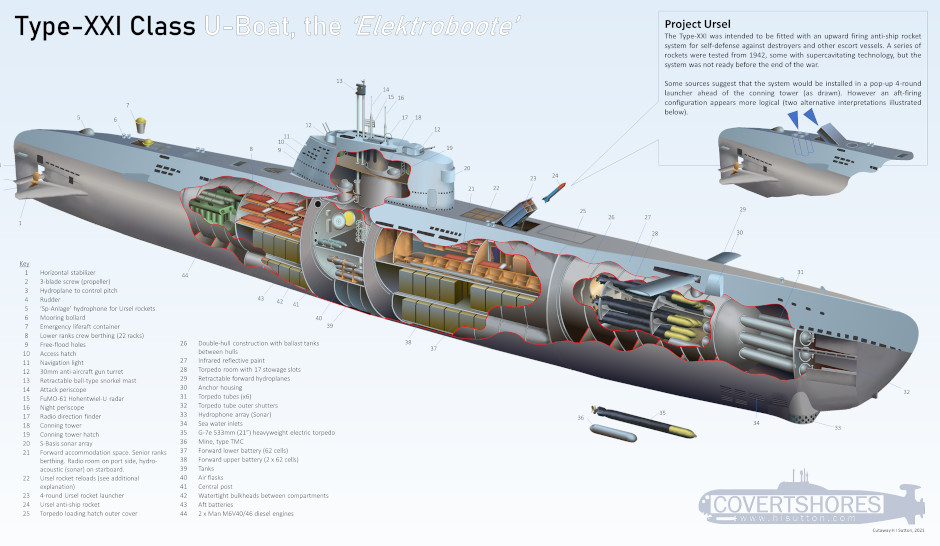
Original artwork of Type-XXI submarine. CLICK to enlarge.
It brought together key features which were to characterize post-war submarines. Some of these were actually not entirely new; the snorkel, a mast which allowed the submarine to run its diesel engines while submerged, had come from captured Dutch submarines and was already in use on earlier U-boats. But the XXI made it an integral part of the design. With the snorkel and a much larger battery capacity it was the first submarine able to operate primarily underwater. Its armament emphasized torpedoes over guns and its design emphasized stealth and speed.
Although the Type-XXI came to late to play a role in World War Two, captured examples were studied and tested by the victorious allies. The Type-XXI directly influenced subsequent designs in the US, UK, Russia and France.
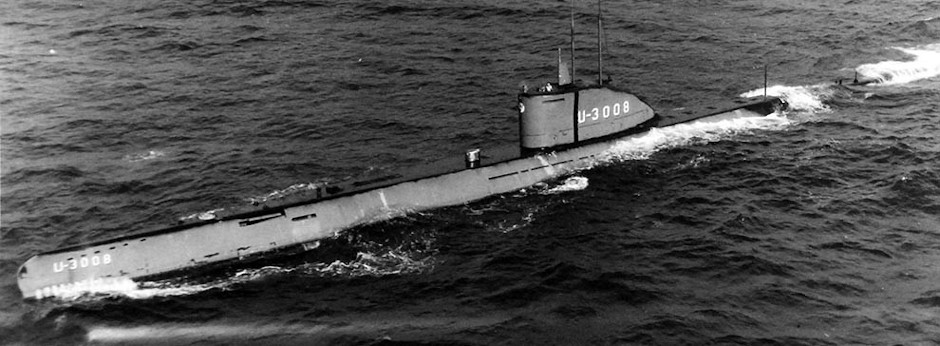
Captured U-3008 was studied and tested by the US Navy
One peculiarity is that the Type-XXI had only a minimal influence on Post-War German designs. This is because it was many years before West Germany resumed submarine production. When they did the requirements had shifted to a more limited local role in the Baltic. The smaller Type-XXIII design was adopted as the starting point instead.
THE book on Special Forces subs Covert Shores 2nd Edition. A world history of naval Special Forces, their missions and their specialist vehicles. SEALs, SBS, COMSUBIN, Sh-13, Spetsnaz, Kampfschwimmers, Commando Hubert, 4RR and many more.
Check it out on Amazon
3. USS Albacore, United States, 1953
The USS Albacore museum website (HERE https://www.ussalbacore.org/) describes this submarine as the “Forerunner of the Future”. I would go further and argue that it is the singularly most influential submarine ever. Its innovative hull shape has influenced almost every submarine since.
Yet it is less well known than some of the others on the list. Possibly because it was unarmed and only ever considered a test submarine. But it was unique and fascinating.
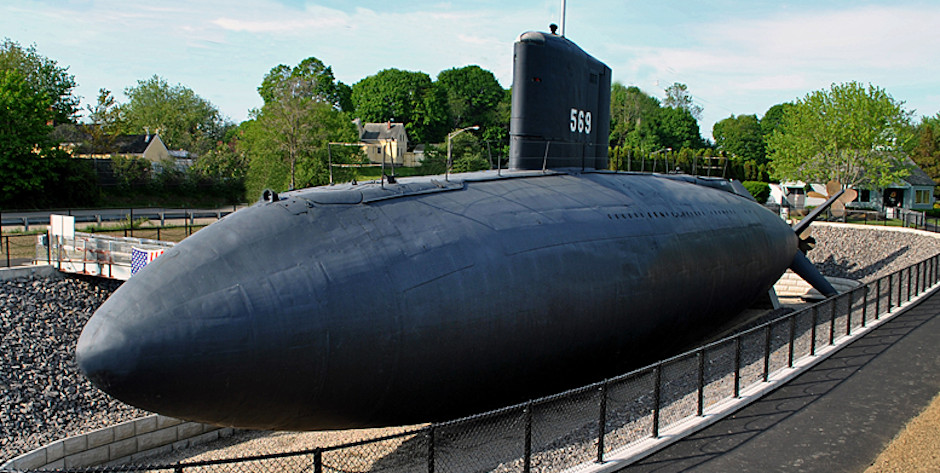
The USS Albacore is now preserved and you can visit it. Photo from USS Albacore museum (https://www.ussalbacore.org/)
The USS Albacore was designed in the early 1950s to test hydrodynamic ideas which could lead to more efficient and faster submarines. It had a more rounded bow (not boat shaped), and a circular cross-section which tapered down to a single screw shaft.
Naturally the Albacore incorporated ideas which had been tried before. And scientific studies such Hilda Lyon’s pioneering work on aerodynamics. But the Albacore brought it all together, which in practice made it revolutionary.
And the learnings were directly shared with submarine designers in several countries. From that moment on almost all submarines have roughly followed the same shape. Things continued to evolve with each country further refining its design, notably cylindrical hulls with Albacore front-and-back were found to be almost as efficient and much cheaper to build. But this was building on Albacore’s learnings, not replacing it.
Initially she was fitted with a cruciform tail but it later tested the X-form rudders which are now standard on many country’s submarines. Sweden is a country that comes to mind for X-rudders. The Swedes got ideas from the Albacore. And the Dutch too.
The World’s ONLY Guide to
Narco Submarines
10 years of research, analyzing over 160 incidents, condensed into a handy guide. This unique book systematically breaks down the types and families. With detailed taxonomy, recognition 3-views, profiles and photos. Available on Amazon
4. USS Nautilus, United States, 1954
The USS Nautilus ushered in the age of the nuclear submarine, and overnight transformed naval warfare.
Submarines were already effective warships. But the Battle of the Atlantic, in which Allied anti-submarine warfare ultimately triumphed over the u-boat, and many losses on all sides during World War Two did not place the submarine in the dominant position it enjoys today. Mostly this was because the submarines had to spend a lot of their time on the surface which made the vulnerable to air threats. The snorkel had partially solved this. But nuclear power was the real answer, and Nautilus was the first.
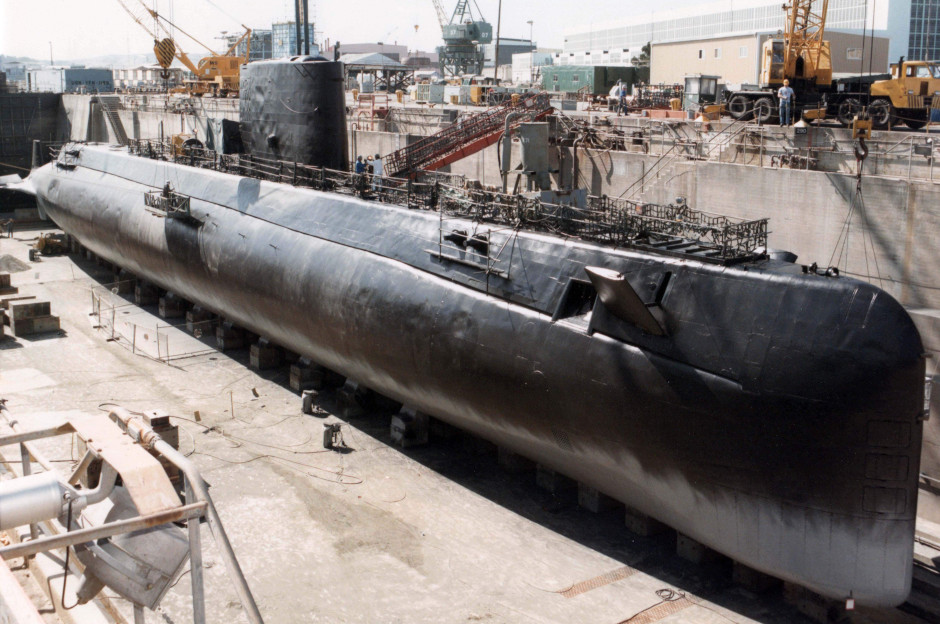
Photo via NAVSOURCE
The nuclear submarine combined practically unlimited range with incredible underwater speed which made them the apex predator of the Cold War and beyond.
Nautilus herself was an otherwise conservative design borrowing much from the Type-XXI influences. Later the nuclear propulsion was married to Albacore style hulls to make the nuclear submarines we know today.
Not every navy could afford nuclear submarines. And there remain roles where non-nuclear submarines can excel. But there is no question today that the most formidable boats afloat are modern nuclear-powered subs.
Covert Shores Posters, T-shirts, Mugs
and more featuring exclusive Covert Shores original artworks and design…Available on TeeSpring
This may help cover the overheads of the website
5. HMS Näcken, Sweden, 1988
This submarine is much less well known, but it led to the widespread adoption of Air Independent Power (AIP). The Swedes first fitted closed-circuit Stirling engines in Nacken in 1988. Since then Stirling engine AIP has been fitted to all Swedish boats and adopted by Japan and copied by China. And other countries, notably Germany, have developed alternative AIPs. While German Fuel-Cells are a different technology, there is little doubt that the Swedish project steered their adoption.
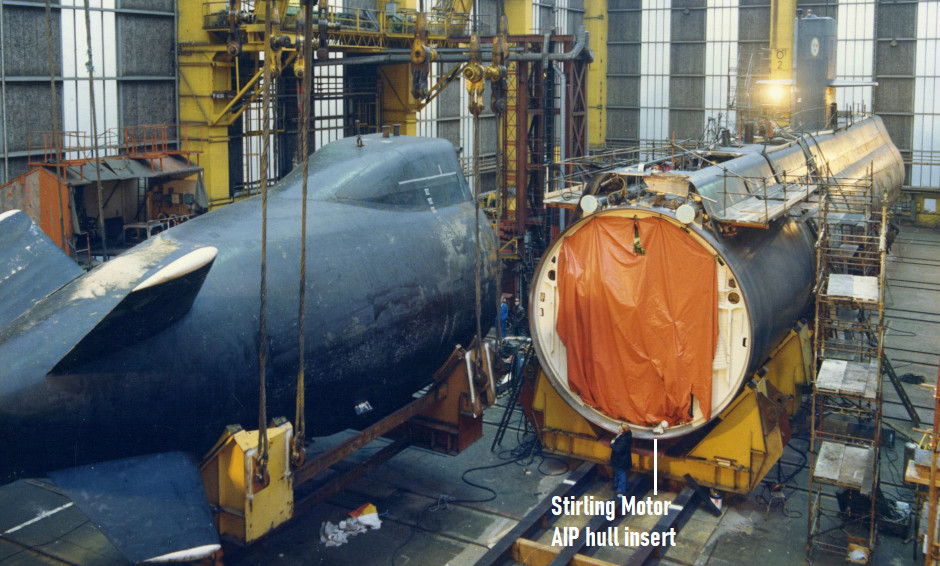
The AIP was contained in an extra hull insert which increased the length of the submarine. Note the X-rudders and rounded hull, directly influenced by the Albacore design.
AIP was actually not new in 1988. It had been experimented with extensively in Germany in World War Two and in the US, Britain and USSR in the 1950s. But these earlier AIP were generally not considered successful. Also their emphasis was on increasing underwater speed while the current trend in AIP is focused primarily on stealth.
The Next Super-Influencer Submarine?
My betting is that the Japanese Soryu Class. The last two boats of the class have introduced Lithium-Ion batteries in place of AIP. And the latest Taigei Class are following, as are possibly South Korean and Chinese boats. If the Lithium-Ion battery trend becomes widespread then we might look back on the Soryu class as a super influencer.
Another one to watch is Boeing’s Orca XLUUV (extra-launch uncrewed underwater vehicle). The first large drone submarine to enter service I think that it won’t be the last.
Related articles (Full index of popular Covert Shores articles)

 Project 09852 Belgorod Special Mission submarine (spy sub). w/Cutaway
Project 09852 Belgorod Special Mission submarine (spy sub). w/Cutaway

 World war One Type UC-1 U-boat w/Cutaway
World war One Type UC-1 U-boat w/Cutaway

 Sweden’s nuclear powered submarine project (A-11A)
Sweden’s nuclear powered submarine project (A-11A)


 Type-212 AIP submarine w/Cutaway
Type-212 AIP submarine w/Cutaway

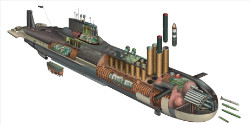 TYPHOON Class SSBN. w/Cutaway
TYPHOON Class SSBN. w/Cutaway

 USS Jimmy Carter (SSN-23) Special Mission submarine
USS Jimmy Carter (SSN-23) Special Mission submarine

 XLUUV armed extra-large UUV
XLUUV armed extra-large UUV

 Project 705 ‘ALFA’ class attack submarine. w/Cutaway
Project 705 ‘ALFA’ class attack submarine. w/Cutaway







